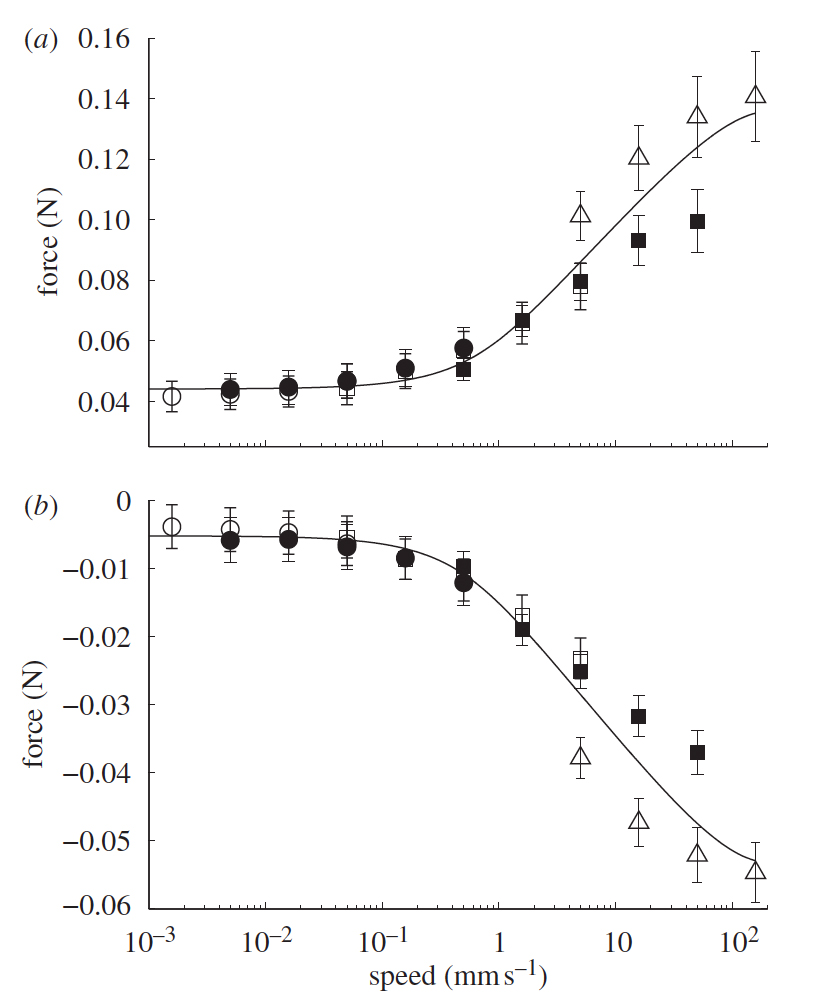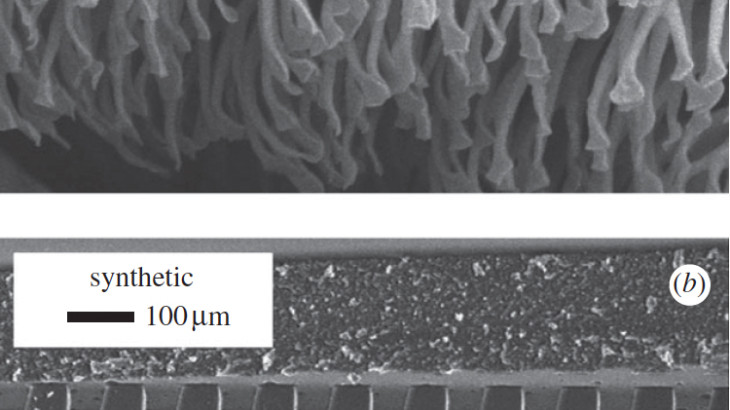
Frictional (a) and adhesive forces (b) of a gecko’s adhesive foot pads increase with increasing sliding velocity. Negative force in (b) indicates sticking to the surface. Figure from Gravish, et al. 2010, Interface.
Even geckos encounter perturbations and environments that can challenge their ability to stick. The hairs of a gecko’s foot are composed of dry, hard keratin. Classic physics predicts dry, hard solids to have frictional forces that decrease at the onset of sliding (kinetic friction is less than static friction). We discovered that gecko adhesives actually become stickier, increasing both their friction (shear) and adhesion (normal) forces as sliding velocity increases. There is no drop in frictional forces upon the onset of sliding and the adhesive’s performance can be maintained for over 30,000 repeated cycles of contact, sliding, and detachment. We have demonstrated that these properties can be captured in gecko synthetic adhesive (GSA) arrays composed of a hard silicone polymer. Finally we have shown that this behavior of both the gecko and the synthetic arrays occurs from the random stick-slip events of the many individual hairs of adhesive fibrils. This fibrillar structure enables a greater energy dissipation as the number of stick slip events increases to a critical level. These results suggest that geckos do not face imminent failure of adhesion if sliding does begin to occur. Rather they can simply maintain foot contact and adhesion and friction will passively increase.
